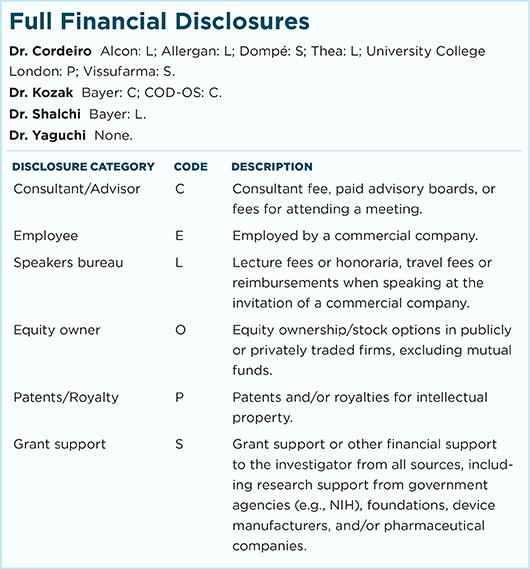Download PDF
Japanese researchers have classified zonular weakness based on the distance the lens shifts at the start of cataract surgery.1 “This classification of zonular weakness may be useful for selecting the appropriate surgical device and procedure during cataract surgery, both of which are dependent on the degree of zonular instability,” said Shigeo Yaguchi, MD, PhD, at Kozawa Eye Hospital and Diabetes Center in Mito, Japan.
The study builds on the team’s previous animal research, which demonstrated that the shifted distance of the lens capsule at the start of continuous curvilinear capsulorrhexis (CCC) correlated with the degree of zonular weakness.2
Study design. This retrospective interventional case series involved 316 consecutive patients (402 eyes) undergoing CCC, phacoemulsification, and implantation of an intraocular lens (IOL). All procedures were performed by a single surgeon. Lens movement was captured on video, retrospectively correlated to surgical interventions, and classified into 3 grades, based on the distance the lens traveled at the start of CCC.
Results. Grade I eyes (68.6% of eyes) experienced a shift of < 0.20 mm. Eyes classified as Grade II (25.4% of eyes) and Grade III (6%) experienced shifts of 0.20-0.39 mm and > 0.4 mm, respectively.
As in the earlier animal study, the need for surgical interventions—the use of a capsular stabilization device and scleral suture fixation of the IOL—was positively correlated with increasing zonular weakness. The researchers also noted a correlation between the shifted distance of the lens and the presence of anterior capsule striae, a characteristic sign of zonular instability during CCC.
Clinical implications. Widespread adoption of the classification system needs to wait for development of video equipment that can capture lens movement during real-time surgery, said Dr. Yaguchi.
For now, he said, “All surgeons can make their own classification of zonular weakness based on the degree of lens movement at CCC. If [similar] data from many surgeons are gathered, the classification would be more reliable.”
—Miriam Karmel
___________________________
1 Yaguchi S et al. PLoS One. 2017;12(4):e0176169.
2 Yaguchi Y et al. J Clin Exp Ophthalmol. 2016;7:541.
___________________________
Relevant financial disclosures—Dr. Yaguchi: None.
For full disclosures and disclosure key, see below.

More from this month’s News in Review